Blog
 The increased use of synthetic chemicals between 1930 and 2000 directly correlates with the rise of obesity in adults. Coincidink? Scientists don’t think so. There’s even a new word for these obesity-promoting chemicals: Obesogens. Yes, really.
The increased use of synthetic chemicals between 1930 and 2000 directly correlates with the rise of obesity in adults. Coincidink? Scientists don’t think so. There’s even a new word for these obesity-promoting chemicals: Obesogens. Yes, really.
Including pesticides, preservatives, parabens, hormones, Bisphenol A (BPA) and phthalates, obesogens are endocrine disruptors—chemicals that mimic hormones and mess up the physiologic function of these hormones—that reprogram your metabolism to build and store fat.
Obesogens are stored in your fatty tissues; once you start to lose weight—surprise!—they’re released into your bloodstream, fooling your body into hoarding calories instead of burning them. Sounds like a recipe for an overweight world, right?
But you can easily reduce your exposure by eating organic, using natural household cleaners, storing food in glass containers rather than plastic, avoiding Styrofoam, and nixing high-fructose corn syrup. Easy. Peasy.
Mar 31, 2014 | Categories: Sustainability | Tags: fat, food, obesity, obesogen, organic | Comments Off on Avoid Obesogens
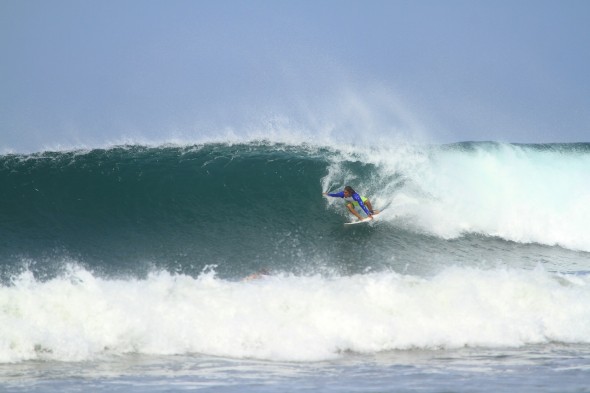
Derided originally by those who favored the more common (and arguably more elegant) approach of the time to the backside barrel known as the “layback”, the highly functional lean forward technique pioneered by the Aussies in the 80’s known as the “Pig-Dog” was a revolutionary development, along with Simon Anderson’s Thruster. Now mostly called a “backside rail grab” while rider flirts with tube, it has become ubiquitous. Positioning and wave knowledge intersect with ability and technique.
photo provided by Surfing Nosara
Mar 28, 2014 | Categories: Costa Rica, Creative Culture, Harmony Hotel, Nosara, Surfing | Comments Off on Guiones Surf Photo of the Week
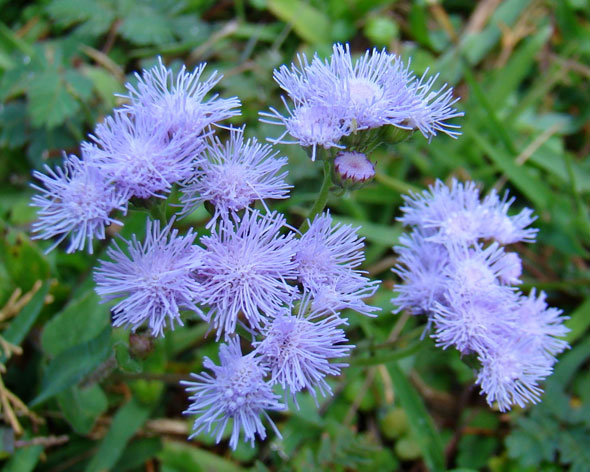
Photo: Anita Gould
Depending on where you live, and perhaps your natural disposition, the Santa Lucía can be a considered a beautiful wildflower, or an obnoxious weed that pops up everywhere and is practically impossible to get rid of. Originating in Central America, this hearty species has managed to travel around the globe to Africa, Asia, Brazil, and even Australia. (Where it is commonly known as billy goat weed, thanks to the fact that it smells remarkably like a male goat.) No matter where in the world you find it, it is utilized by local cultures as a remedy for an impressive range of maladies, including diarreah, pneumonia, fever, headache, colic, sore throat, even cuts and burns. In Costa Rica, when the Santa Lucía blooms en masse after November’s heavy rains, the pink, lavender, blue, and white flowers create a sea of color washing over hills and along roadsides. Making the most of this abundance, neighbors traditionally exchange bouquets of the flowers in January to bring good luck and prosperity in the new year. It is also said that if you put a sprig of Santa Lucía in your wallet, you’ll end up with plenty of money for the whole year. Now, as is the case with any promise of easy money, there are a few small conditions. The flower has to be a gift from someone, and supposedly only the white flowers will bring about the desired outcome. So while it’s probably true that money doesn’t grow on trees, much less wildflowers, it’s still fun to participate in a local tradition. And like the famous lottery slogan says: “Hey, you never know.”
Mar 27, 2014 | Categories: Costa Rica, Nature | Comments Off on The Santa Lucía Flower
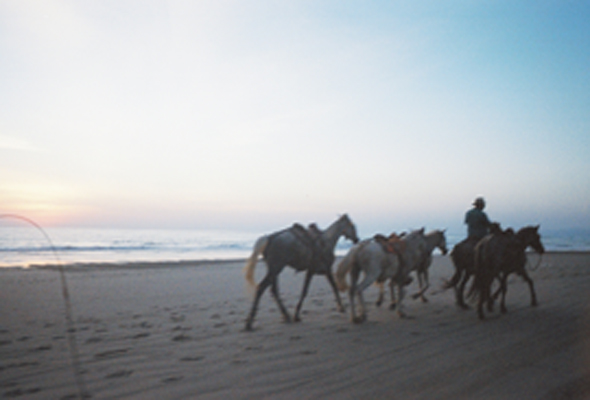
After I came across Anna Ehrgott’s lovely Tumblr page I reached out to see if she’d be interested in sharing her photos of Costa Rica with the Harmony community. Turns out she is a surfer, a seamstress, and designs both board bags and wetsuits. She has also devoted time to volunteering at a turtle sanctuary. Perfect for our Central Creatives series, it is rare and wonderful when a connection through social media rings so true.
Name: Anna Ehrgott
Where do you live? Topanga, California. A small town nestled in a canyon.
What is your main artistic practice?
I’m a self employed seamstress, I use sew with solely upcycled fabric from factory remnants or hand crafted fabrics that support small businesses. I mostly make board bags for surfboards (sagebrush bags) and other items.
I was a model for a few years, during that time I was also interning with photographers to learn both sides of the trade. After a surfing injury kept my out of the ocean I started taking photos from the beach of my friends. When I healed I wanted to continue shooting photos, so I then got into water photography and bringing a camera out into the lineup with me. It’s still one of my favorite joys.
Designing women’s stylish wetsuits for an eco-friendly, custom fitted, Japanese wetsuit company called Axxe Wetsuits has been a fun new thing for me. I’m excited for them to come out in the women’s catalog in the next month or so!
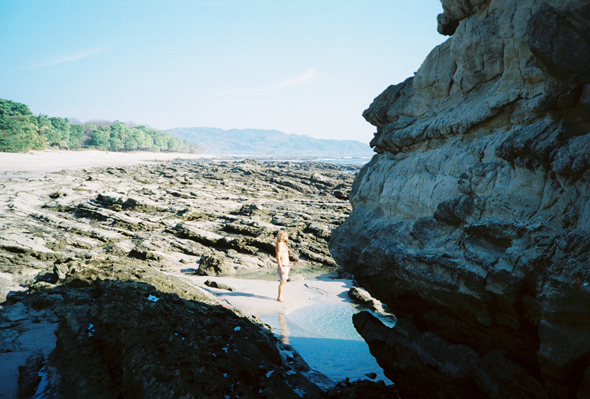
Tell us about what brought you to Costa Rica.
This was my third time visiting the beautiful country of Costa Rica. The first two times were to visit the cloud forests and spend time volunteering at a turtle sanctuary, keeping track of and protecting the nests of sea turtles. This time I made the trip with my boyfriend to attend our friend’s wedding ceremony in Santa Teresa, Costa Rica, which was the main reason to come to the area. They were married at the Vista De Olas hotel, overlooking the town, the ocean and the cape of the peninsula, which is natural reserve land. It was such a stunning place. We wanted to stay longer, so we spent the next two weeks surfing the fun beach breaks in Santa Teresa and exploring the Nicoya Peninsula. Santa Teresa was especially nice for me, being an organic, vegan, surfer I was in love. The organic market and the ocean were both walking distance from where we were staying. The mornings were spent indulging in fresh papayas, surfing, and exploring tide pools. Mid-days were lazily spent in hammocks with books and puppies until the afternoon golden light led us back to the ocean. It was so amazing to watch every single sunset on the trip from the sea, such amazing colors. Valentine’s Day was fittingly the most pink sunset I’ve ever seen!
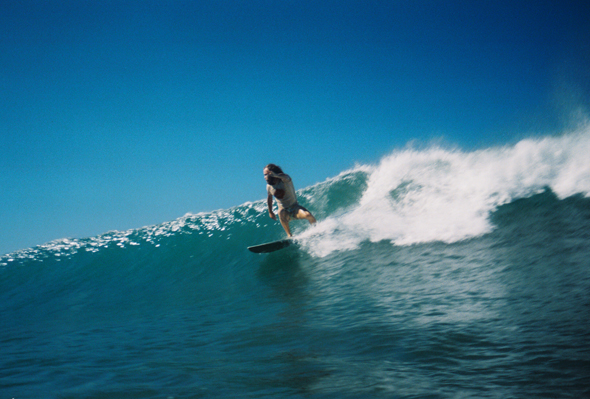
I loved shooting photos in Santa Teresa, the sun shone every day and provided a perfect conditions for surf photography. My boyfriend, Alrik Yuill is an artist and was especially inspired by the free spirited travelers and his artwork and sketches reflected the happiness, the sun shine, and the surfing we enjoyed with friends.
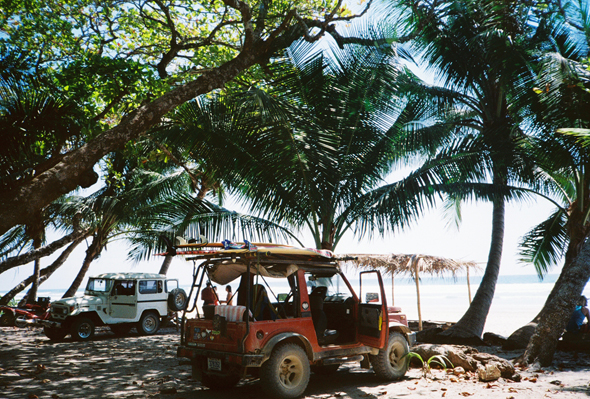
Where can we find your work online?
My board bags are for sale on my site sagebrushbags.bigcartel.com, my photography blog is annaehrgott.tumblr.com and my instagram for it all is @annaehrgott
Mar 26, 2014 | Categories: Costa Rica, Creative Culture, Surfing, Travel | Comments Off on Photography, Surfing, and Eco-Friendly Wetsuits. Meet Anna Ehrgott
 Looking for a cheap fix on a luxury fabric? Polyester silk impersonators like nylon and polyester are made from petrochemicals derived from oil and aren’t biodegradable, which means once you and the thrift store are done with that retro-chic pantsuit, it will live in the landfill forever.
Looking for a cheap fix on a luxury fabric? Polyester silk impersonators like nylon and polyester are made from petrochemicals derived from oil and aren’t biodegradable, which means once you and the thrift store are done with that retro-chic pantsuit, it will live in the landfill forever.
Plus, nylon manufacturing creates nitrous oxide, a greenhouse gas three hundred times more potent than carbon dioxide. And making polyester uses large amounts of water for cooling, along with lubricants, which can become a source of contamination. Both processes are energy-hungry, making them unsustainable on two counts.
If you’re turned off by the silkworm-killing process involved in making conventional silk, invest in ahimsa—or “peace silk”—which is created when the worm is allowed to live out its lifecycle, rather than killed to extract the silk inside its cocoon.
Groovy.
Mar 24, 2014 | Categories: Sustainability | Tags: ahimsa silk, eco-fashion, fashion, peace silk, silk, style | Comments Off on Patronize Peace Silk
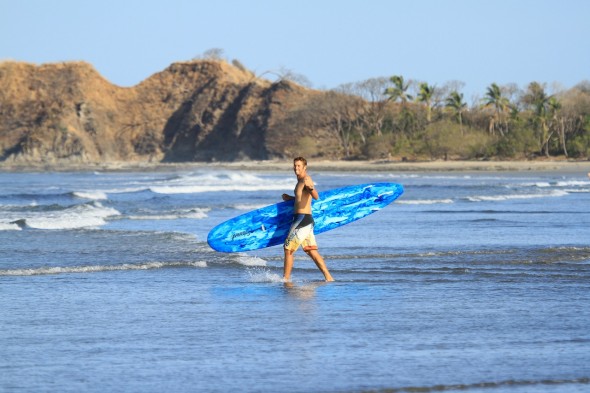
Leave that dark and frigid Winter behind! Dry season on the Nicoya: Warm and Offshore. Nothing like a simple low tide walk in the morning to get the head right, before the privilege of paddling out into friendly water for some salt and sun. Salve for the Soul !
photo provided by Surfing Nosara
Mar 21, 2014 | Categories: Costa Rica, Creative Culture, Harmony Hotel, Nosara, Surfing | Comments Off on Guiones Surf Photo of the Week
The clever and awfully cute White Nosed Coati, locally known as the Pizote, is more than happy to use his good looks to distract you while his siblings steal your lunch. Commonly spotted in Costa Rica, Pizotes are easy to recognize by their long ringed tails, which they hold completely and unabashedly upright while walking around or foraging on the forest floor. On their other end, they boast a remarkably flexible and sensitive snout that helps them sniff out and uncover their regular diet of fruits, insects, and small vertebrates. Proven to be quite intelligent, there has been a trend to keep Pizotes as pets, but they are much better suited to living in the wild. Witnessing their hunting method of pinning down their prey with long sharp claws before delivering a death bite to the head would hopefully lead one to choose a puppy instead. Curious and gregarious, Pizotes that have adjusted to humans in their neighborhood are not shy about begging for food and can get quite aggressive when they have a craving for what you’re eating. Of course, one look at that face and you could be forgiven for wanting to give the little guy half your sandwich.
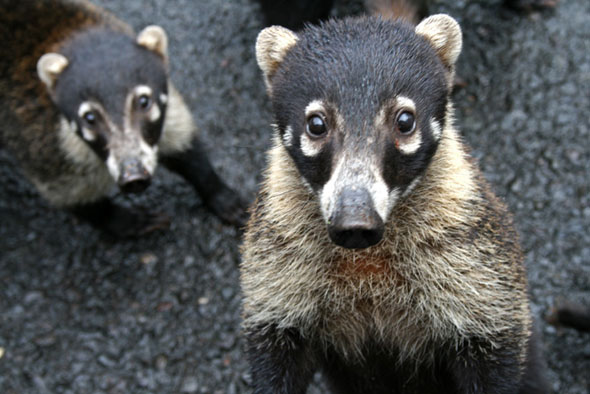
Mar 20, 2014 | Categories: Costa Rica, Harmony Hotel, Nature, Nosara | Comments Off on The Pizote
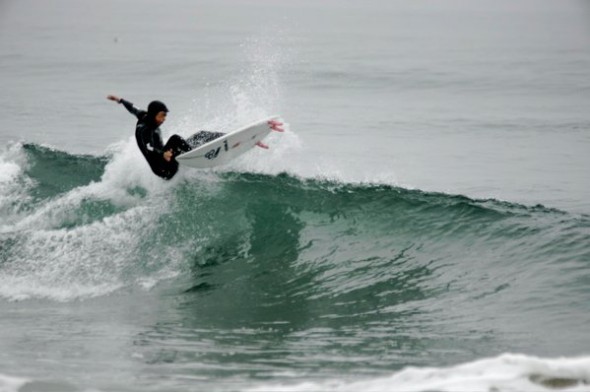
When Monterey Bay native Dion Mattison moved to New York from California, it didn’t take long for the city to get under his skin. “I came to New York in 2009 to get my PhD in Philosophy from the New School for Social Research,” he said. “I’m now about a year off from completing that goal and have definitely fallen in love with New York in the process.” An avid and accomplished surfer, he was lucky to find a place where his academic drive and passion for surfing could intersect. When he’s not in the water, he’s writing his dissertation the history of philosophy’s attitude towards fashion, teaching fashion and aesthetic theory courses at the New School or giving private surf lessons through his of Conatus Surf Club (see blog). Read his thoughts on surfing below:
Name: Dion Mattison
Age: 33
Where do you live: Brooklyn (Prospect/Crown Heights)
Years surfing: 32
Surfing is: Ha. I’ve written a ten page paper on this question. The problem I was trying to solve in the paper is why surfing is such a difficult practice to teach (something I do for a living). My hypothesis is that there is a general misunderstanding about what surfing is. It is clearly not just standing up on a wave and riding a board. It is this view of surfing that throws people off when they seek to practice it. It is also unhelpful to try to put it into the art or sport or religion categories. Doing that doesn’t do any work to help us understand what surfing is. In the paper I’m referencing I use Ludwig Wittgenstein’s concept of language-games to define surfing. For Wittgenstein language games are ‘forms of life’ with grammatical structures. So when I say that surfing is not just riding a board on a wave, not art, not a sport, I also mean to say that all of these are a part of surfing, but that they do not make up the whole of it—they are simply parts in its grammatical structure. It is also important to note that for Wittgenstein grammars are not concrete full stop, i.e., there are certain rules that are inviolable, but new ones may arise that come to alter or augment the existing grammar. For example, the use of jet skis in large surf to ensure safety. Surfing’s grammar is comprised of so many things: bathymetric, oceanographic meteorological knowledge (either in scientific or layman’s terms—basic ocean and wave knowledge), surfboard equipment, awareness of the practice’s historicity, lineup etiquette, the pro surfing sport aspect (which of course has its own grammar), social events, etc. There are some rules that take precedence over others for basic knowledge because the stakes are higher—this is why first and foremost surfing is establishing a relationship with the ocean, which by most standards is one of the most powerful and uncanny phenomena known to humankind. It is also about establishing relationships with the other people who have relationships with the ocean (not all who ride surfboards, to be sure)—this comprises a major part of the very crucial ethical dimension of surfing. I could obviously go on and on and explain surfing’s family resemblance to other practices/language-games; I can talk about private language and inner/outer distinctions, and the importance of exemplars and kinship structures (for my own surfing I am forever grateful to my father who taught me to surf and to Taylor Steele for making videos of Rob Machado available in the 1990s), but I think I’ll end soon instead. I want to stress that in defining surfing as a language game I am not promoting some kind of relativism—that surfing is relative to whomever practices it—no that cannot be the case. The advantage of the language game theory is that there is an inherent flexibility—there are artful and sporty and religious aspects to surfing—but there are also concrete rules—the first of which is: respect the ocean.
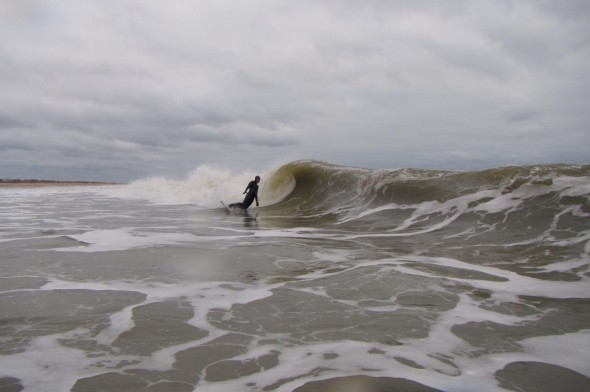
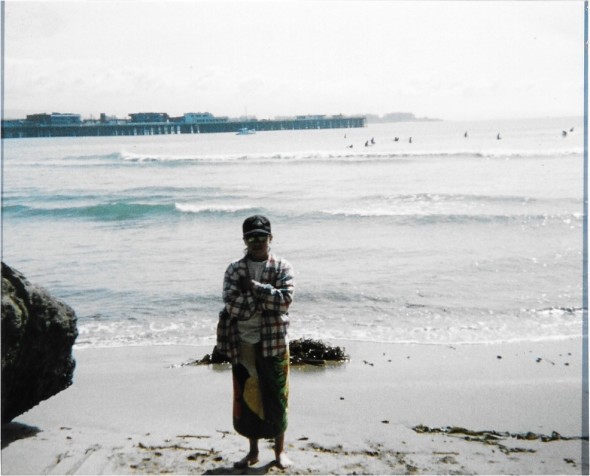
Vintage Dion
Mar 18, 2014 | Categories: Creative Culture, Surfing | Comments Off on SURFING IS… WITH DION MATTISON
 The increased use of synthetic chemicals between 1930 and 2000 directly correlates with the rise of obesity in adults. Coincidink? Scientists don’t think so. There’s even a new word for these obesity-promoting chemicals: Obesogens. Yes, really.
The increased use of synthetic chemicals between 1930 and 2000 directly correlates with the rise of obesity in adults. Coincidink? Scientists don’t think so. There’s even a new word for these obesity-promoting chemicals: Obesogens. Yes, really.














